Kayaking has become increasingly popular over the years, and it is for good reason. It is a great way to explore bodies of water, get exercise, and even relax. However, it can also be challenging for beginners to navigate the waters with just a paddle. This is where kayak rudders come in. In this guide on how to use kayak rudders, we will discuss what they are, why they are useful, and how to properly use them.
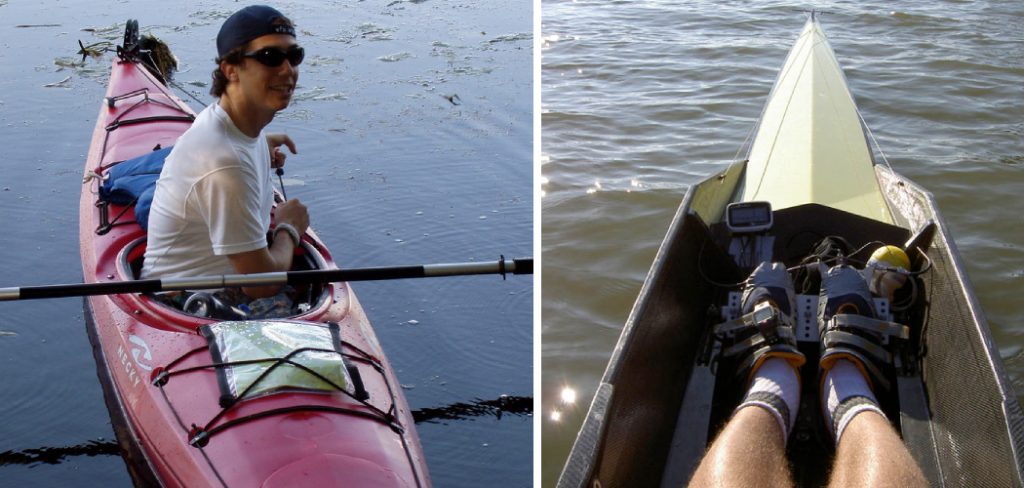
What are Kayak Rudders?
Kayak rudders are a small, movable fin-like structure attached to the rear of your kayak. They can be controlled by foot pedals located in the cockpit of the kayak. By using these foot pedals, you can steer your kayak and make it turn in the desired direction.
Necessary Items
Before learning how to use kayak rudders, you will need a few items:
- A Kayak With a Rudder System: Not all kayaks come equipped with rudders. If you are planning to purchase one, make sure it has the option for a rudder system.
- Foot Pedals: These are typically already installed in the cockpit of your kayak.
- Rudder Cables: These connect the foot pedals to the kayak rudder.
- Bungee Cords: These are used to secure the rudder in place when not in use.
12 Steps on How to Use Kayak Rudders
Step 1: Familiarize Yourself With the Foot Pedals
First things first, sit in your kayak and take a moment to familiarize yourself with the foot pedals. You will be using these to control the direction of your kayak. And just like driving a car, you will have one pedal on the right and one on the left.
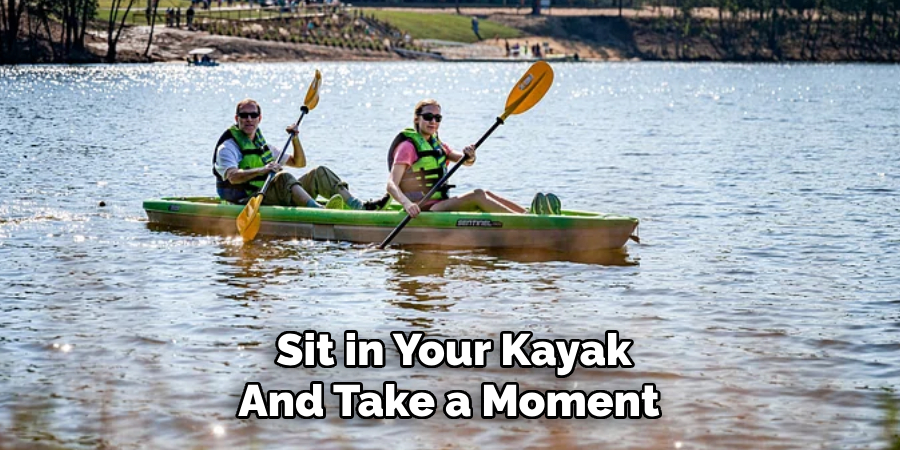
Step 2: Adjust Your Foot Pedals
Before heading out onto the water, make sure to adjust your foot pedals to fit your comfort level. You want them to be within reach of your feet but not too close that they hinder your movement. So, take the time to adjust them accordingly.
Step 3: Secure Your Rudder Cables
Next, secure your rudder cables by attaching them to the foot pedals. You can do this by simply clipping them on. Be sure to check that they are securely attached and won’t come loose while kayaking.
Step 4: Deploy the Rudder
Most kayaks will have a lever or knob that allows you to deploy the rudder. This is located near the rear of the kayak. Pull on this lever or turn the knob until the rudder is fully extended and locked in place.
Step 5: Test Your Rudder
Before getting out onto open water, it’s a good idea to test your rudder by lightly paddling in a calm area. This will give you a feel for how it responds to your movements. Like any new skill, it may take some time to get the hang of it.
Step 6: Adjust The Rudder Angle
To make sure you are going in the desired direction, you will need to adjust the rudder angle. This can be done by using your foot pedals. Pressing down on one pedal will move the rudder in that direction.
Step 7: Practice Turning
To turn your kayak, you will need to use your foot pedals. Pressing down on one pedal will cause the rudder to move in that direction, which in turn will steer your kayak. Practice turning and getting a feel for how the kayak responds.
Step 8: Try Out Different Rudder Positions
The position of the rudder can also affect how your kayak responds. Experiment with different positions to see which one works best for you and what conditions you are kayaking in. As a general rule, the more vertical the rudder is, the more responsive your kayak will be.
Step 9: Keep Your Movements Smooth
When using kayak rudders, it’s important to keep your movements smooth and controlled. Jerky movements can cause your kayak to become unbalanced and potentially tip over. So, be sure to use gentle and steady pressure on the foot pedals.
Step 10: Know When to Use the Rudder
Rudders are most useful when kayaking in windy or choppy conditions. They can help you maintain control and stay on course. However, they may not be necessary when paddling on calm water. So, know when it’s appropriate to use the rudder.
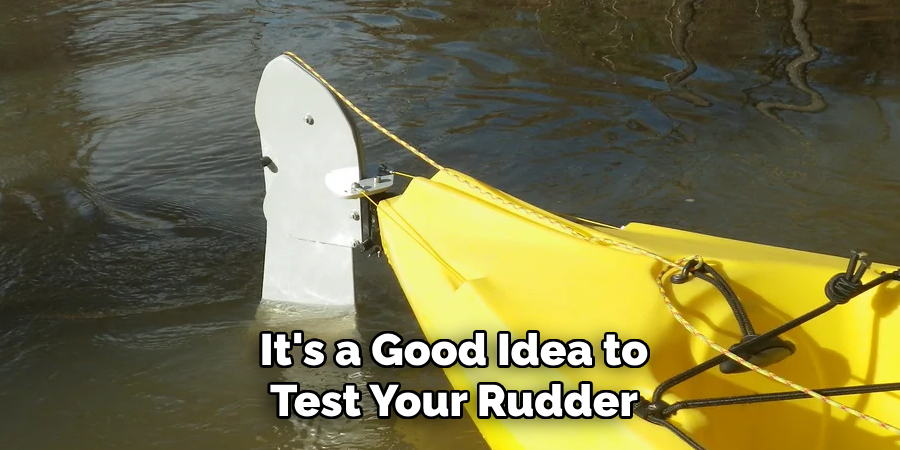
Step 11: Retract the Rudder When Not in Use
When you are done using your kayak rudder, make sure to retract it by pulling on the lever or turning the knob. This will bring the rudder back into a horizontal position and secure it in place with bungee cords.
Step 12: Practice Makes Perfect
Like any skill, using kayak rudders takes practice. So, don’t get discouraged if you don’t have perfect control over your kayak the first time you use them. With some time and experience, you will become more comfortable and confident in using them.
Kayak rudders can be a great tool for navigating challenging water conditions and improving your kayaking skills. By following these steps and practicing, you can learn how to effectively use kayak rudders and enhance your overall kayaking experience. So, get out there and have fun exploring the waters with your newly acquired knowledge!
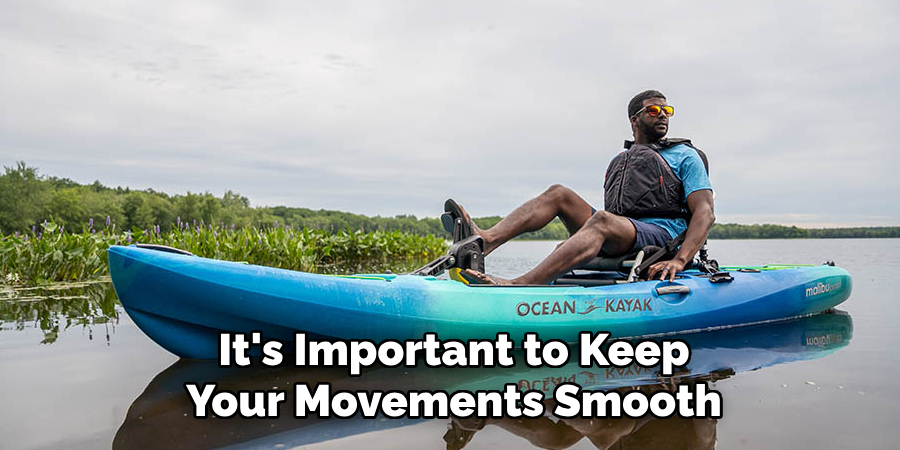
9 Safety Measures to Keep in Mind
While using kayak rudders can greatly improve your kayaking experience, it’s important to also keep safety in mind. Here are 9 safety measures to remember when using kayak rudders:
1. Always Wear a Life Jacket
No matter how experienced you are at kayaking, it’s always important to wear a life jacket. This will keep you safe in case of any unexpected accidents or emergencies. And remember, even the most experienced kayakers can have mishaps.
2. Keep an Eye on Weather Conditions
Before heading out onto the water, be sure to check the weather forecast. Avoid going kayaking in severe weather conditions, as this can put you at risk. And if you do encounter changing weather conditions while on the water, be prepared to adjust your plans accordingly.
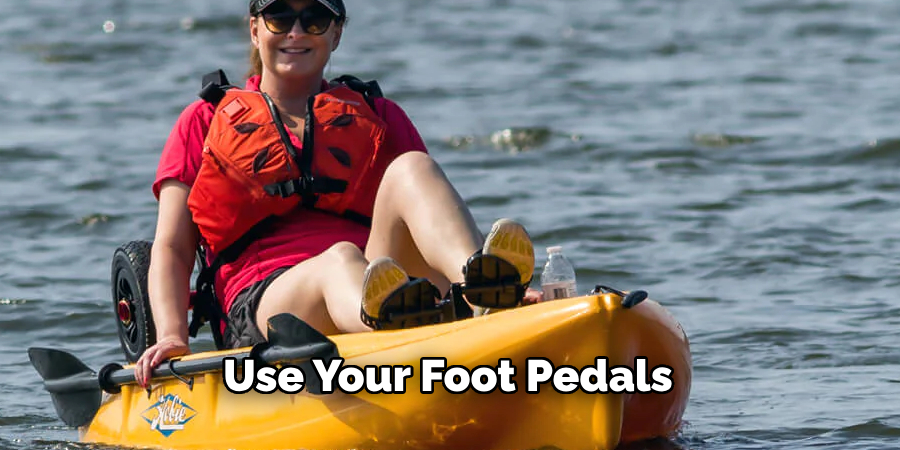
3. Check Your Equipment
Before each kayaking trip, make sure to check your equipment for any damage or malfunctions. This includes your kayak, rudder system, foot pedals, and other necessary items. So, take the time to inspect everything and make any necessary repairs or replacements.
4. Know Your Limits
It’s important to know your own abilities and limits when kayaking. Don’t attempt to use kayak rudders in challenging conditions if you are not yet comfortable and experienced with them. It’s always better to err on the side of caution rather than put yourself in a dangerous situation.
5. Stay Hydrated and Nourished
Kayaking can be physically demanding, so it’s important to stay hydrated and nourished while on the water. Bring enough water and snacks with you, especially on longer trips. And remember to take breaks when needed to refuel and rest.
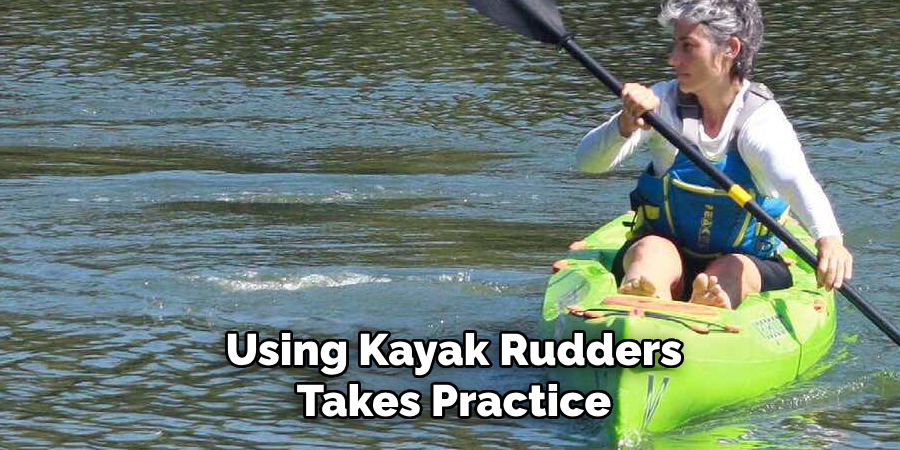
6. Communicate With Others
If you’re going kayaking with a group or even by yourself, be sure to communicate your plans and expected return time with someone else. This way, if something goes wrong, someone will know to come looking for you.
7. Dress Appropriately
Wearing the right clothing can not only keep you comfortable while kayaking but also safe. Be mindful of the water and air temperature when choosing your attire. And always wear appropriate footwear to protect your feet from any potential hazards.
8. Be Aware of Your Surroundings
While using kayak rudders, it’s important to constantly be aware of your surroundings. Keep an eye out for other boats or objects in the water that could potentially cause harm. Be sure to follow any safety guidelines or regulations in the area where you are kayaking.
9. Practice Self-Rescue Techniques
Even with all the necessary precautions, accidents may still happen. It’s important to know and practice self-rescue techniques, such as how to re-enter your kayak from the water and how to properly use a rescue rope. These skills can potentially save your life in a dangerous situation.
By keeping these safety measures in mind, you can enjoy using kayak rudders while also minimizing any risks. Remember to always prioritize your safety and the safety of those around you when kayaking. Overall, learning how to use kayak rudders can greatly enhance your kayaking experience and give you more control over your movements on the water.
8 Things to Avoid When Using Kayak Rudders
While using kayak rudders can greatly improve your kayaking skills, there are also some things to avoid when using them. Here are 8 common mistakes to watch out for:
1. Using the Rudder Too Much or Too Little
The key to effectively using a kayak rudder is finding the right balance in how much you use it. Using it too much can cause you to lose speed and tire yourself out, and using it too little defeats the purpose of having a rudder.
2. Improper Foot Placement
Your foot placement on the pedals is crucial in controlling your kayak with a rudder. Be sure to have a firm grip on the pedals with the balls of your feet and avoid placing too much weight on them.
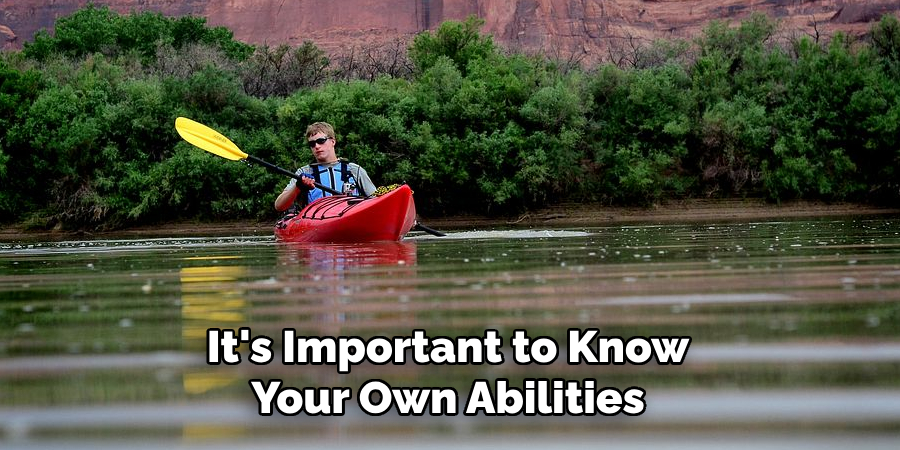
3. Not Understanding Wind and Water Currents
It’s important to understand how wind and water currents can affect your kayak while using a rudder. Wind can push your kayak off course, while strong water currents can make it difficult to steer with a rudder. Be sure to plan accordingly and adjust your movements as needed.
4. Forgetting to Adjust the Rudder for Different Conditions
Different water conditions may require different settings for your kayak rudder. For example, you may need a deeper or shallower rudder depth depending on the strength of currents or waves. Always be aware of changing conditions and make necessary adjustments to your rudder.
5. Not Checking for Debris
Before entering the water, be sure to check for any debris that may get stuck in your rudder. This could potentially affect your steering and make it difficult to control your kayak. As a precaution, you can also bring a small knife with you to cut away any debris if needed.
6. Using the Rudder as a Brake
It may be tempting to use your kayak rudder as a brake when paddling against strong currents or winds. However, this can put unnecessary strain on the rudder and potentially cause damage. Instead, use your paddle for braking and save your rudder for steering.
7. Ignoring Maintenance
Just like any other piece of equipment, kayak rudders require regular maintenance to ensure they function properly. Be sure to regularly clean and inspect your rudder for any damage or wear and tear. If you notice any issues, make the necessary repairs or replacements before heading out on the water.

8. Not Practicing Enough
Using kayak rudders takes practice, and getting comfortable with them may take some time. It’s important to regularly use your rudder and experiment with different techniques and settings to find what works best for you. Don’t be discouraged if it takes a few trips to get the hang of using a rudder effectively. With time and practice, you’ll be able to confidently navigate through the water with ease. So, don’t forget to regularly get out on the water and practice using your kayak rudder!
8 Additional Tips for Enjoying Your Kayak Rudder Experience
While safety and proper technique are crucial when using kayak rudders, there are also some additional tips that can enhance your overall experience. Here are 8 more things to keep in mind while out on the water:
1. Plan Your Route Ahead of Time
Before heading out, it’s important to plan your route and familiarize yourself with the area. This can help you anticipate any potential challenges or hazards, as well as give you an idea of where to stop for breaks or sightseeing.
2. Stay Hydrated
Kayaking can be physically demanding, so it’s important to stay hydrated while on the water. Bring plenty of water with you and take regular breaks to drink and rest. While using a kayak rudder can make paddling easier, you may still be expending more energy than you realize.
3. Double Check Your Equipment
Before launching your kayak, double-check all of your equipment to ensure it is in good working condition. This includes not only your kayak and rudder but also your paddles, life jacket, and any other gear you may need.
4. Dress Appropriately
Wear clothing and gear that is appropriate for the weather and water conditions. This may include a wetsuit or dry suit if the water is cold or a hat and sunglasses to protect from the sun. It’s also a good idea to bring an extra set of clothes in case you get wet.
5. Communicate with Others
If you’re kayaking with a group, it’s important to communicate with each other and have a plan in case of emergencies. Make sure everyone knows hand signals or verbal cues when communicating while on the water.
6. Respect Wildlife and the Environment
As you explore the natural beauty of your surroundings, be mindful of the wildlife and environment around you. Avoid disturbing animals or littering, and always follow Leave No Trace principles. Even small actions can make a big impact on preserving the environment for future generations.
7. Take Breaks and Enjoy the Scenery
While it may be tempting to paddle non-stop, be sure to take breaks and enjoy the scenery around you. This can not only give you a chance to rest and recharge but also allow you to fully appreciate your surroundings.
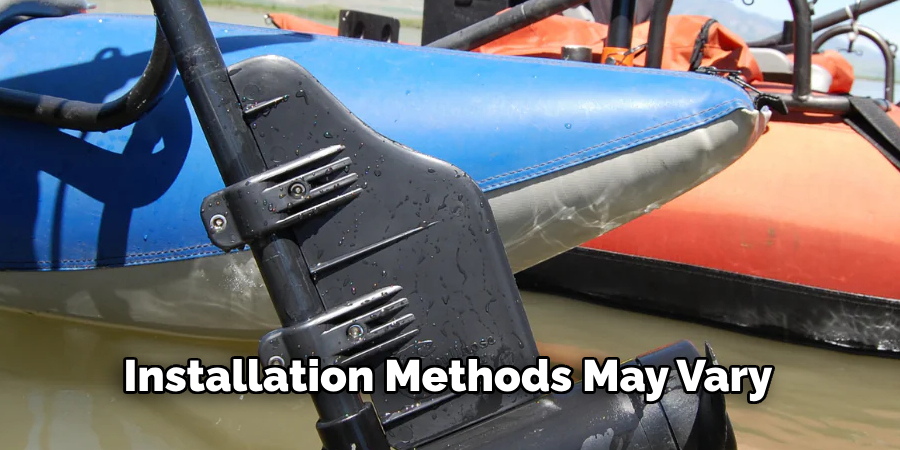
8. Document Your Experience
Lastly, don’t forget to document your kayak rudder experience! Take photos or videos to capture the memories and share them with others. You can also use a GPS tracker or journal to track your route and important details of your trip. This can be a fun way to look back on your adventures and inspire others to get out on the water.
So, whether you’re a beginner or an experienced kayaker, using a kayak rudder can greatly enhance your paddling experience. Just remember to prioritize safety, practice regularly, and have fun while out on the water! Remember these tips on how to use kayak rudders and enjoy your journey with your trusty kayak rudder by your side.
Frequently Asked Questions about Kayak Rudders
As you continue to explore the world of kayaking, you may have some additional questions about kayak rudders. Here are some commonly asked questions and their answers:
Do All Kayaks Come With Rudders?
No, not all kayaks come with rudders. Some smaller or recreational kayaks may not have rudder capabilities, while others may have the option to add a rudder as an accessory. It’s important to check the specifications of your kayak before purchasing a rudder.
Do I Need a Rudder?
It depends on personal preference and the type of kayaking you will be doing. If you primarily paddle in calm waters or use a shorter, more maneuverable kayak, you may not need a rudder. However, if you frequently paddle in areas with strong winds or currents, a rudder can greatly assist with steering and stability.
How Do I Install a Kayak Rudder?
Installation methods may vary depending on the type of rudder and kayak you have. It’s important to carefully follow the instructions provided by the manufacturer or seek assistance from a professional if needed. Improper installation can affect the functionality and safety of your rudder.
Can I Use a Rudder on Any Kayak?
Not all kayaks are designed to accommodate a rudder. It’s important to check your kayak’s specifications and compatibility with rudders before purchasing one. In some cases, modifications may need to be made in order for a rudder to be installed properly.
Are There Different Types of Kayak Rudders?
Yes, there are different types of kayak rudders, such as skeg rudders and retractable rudders. Each type has its own advantages and disadvantages, so it’s important to research and determine which one is best for your specific needs.
Can I Use My Kayak Rudder in Shallow Water?
It’s not recommended to use a kayak rudder in shallow water, as it can get damaged or become stuck. It’s important to carefully navigate through shallow areas and, if possible, lift the rudder out of the water until you reach deeper waters.
How Do I Maintain My Kayak Rudder?
Regular maintenance is key to ensuring your kayak rudder functions properly. Be sure to clean and lubricate all moving parts and inspect for any damage before and after each use. It’s also important to properly store your rudder when not in use to prevent wear and tear.
Conclusion
Kayak rudders can be a valuable tool for any kayaker, adding stability and enhancing maneuverability on the water. By following these tips and guidelines, you can make the most out of your kayak rudder experience and enjoy all that kayaking has to offer. So, have fun, stay safe, and happy paddling!
Overall, learning how to use kayak rudders can greatly enhance your kayaking experience and give you more control over your movements on the water. It’s important to practice these techniques in safe and controlled environments before using them in more challenging conditions.
About the Author
Jennifer Branett is the author of Fishy Kayak and an expert in fish-related fields, with over 10 years of experience. Her work blends passion for fishing with a commitment to conservation.
Educational Background
Degree: Bachelor’s in Marine Biology
Institution: University of California, Santa Barbara
Specializations: Aquatic ecosystems, fish behavior, and sustainable practices
Professional Experience
Conservation Projects:
Collaborated with local organizations to restore aquatic habitats
Developed educational programs on sustainable fishing practices
Publications:
Authored articles for fishing magazines and environmental journals
Featured speaker at fishing expos and conservation conferences
Key Areas of Expertise
Fishing Techniques:
Kayak fishing strategies
Freshwater and saltwater fishing methods
Environmental Stewardship:
Advocacy for sustainable fishing
Promoting biodiversity in aquatic environments
Awards and Recognition
Recipient of the [Specific Award Name] for contributions to marine conservation
Recognized as a leading voice in the fishing community by [Organization/Publication Name]
Community Engagement
Workshops and Seminars:
Regularly hosts events to educate anglers on sustainable practices
Engages with youth programs to inspire the next generation of fishers
Online Presence:
Maintains an active blog sharing tips, stories, and conservation efforts
Engages with followers on social media to promote fishing ethics
Personal Interests
Enjoys kayaking in scenic locations
Passionate about photography, capturing the beauty of nature
Advocates for local conservation efforts in her community
